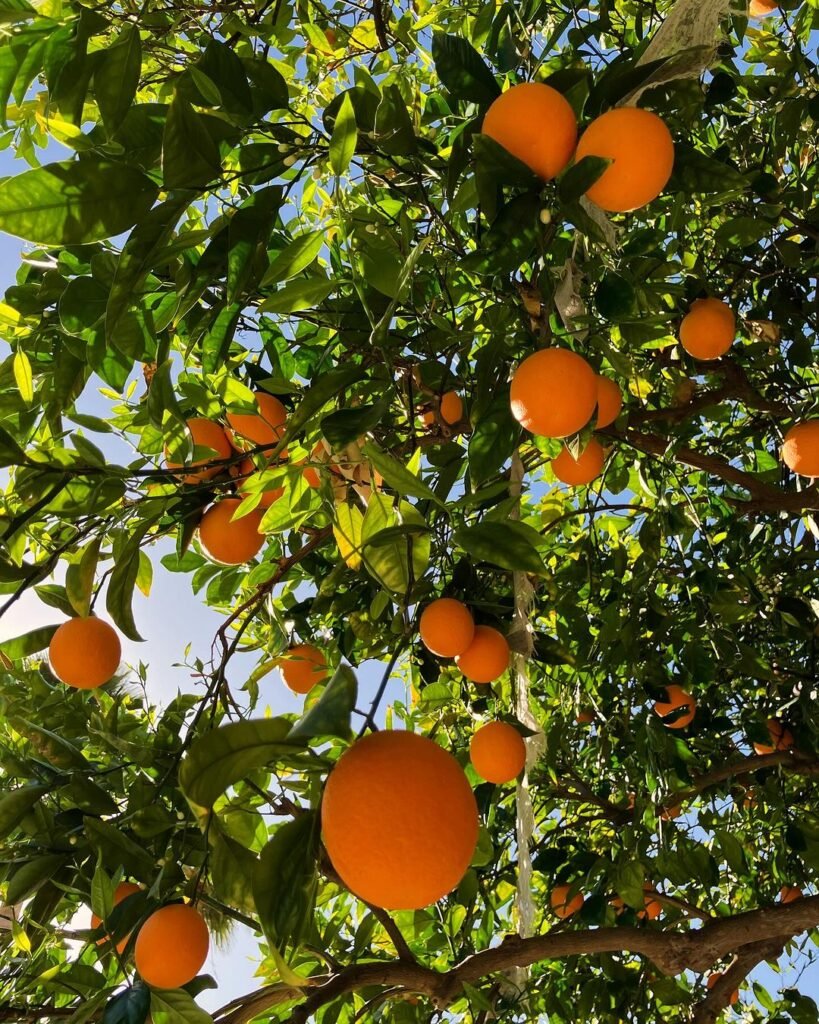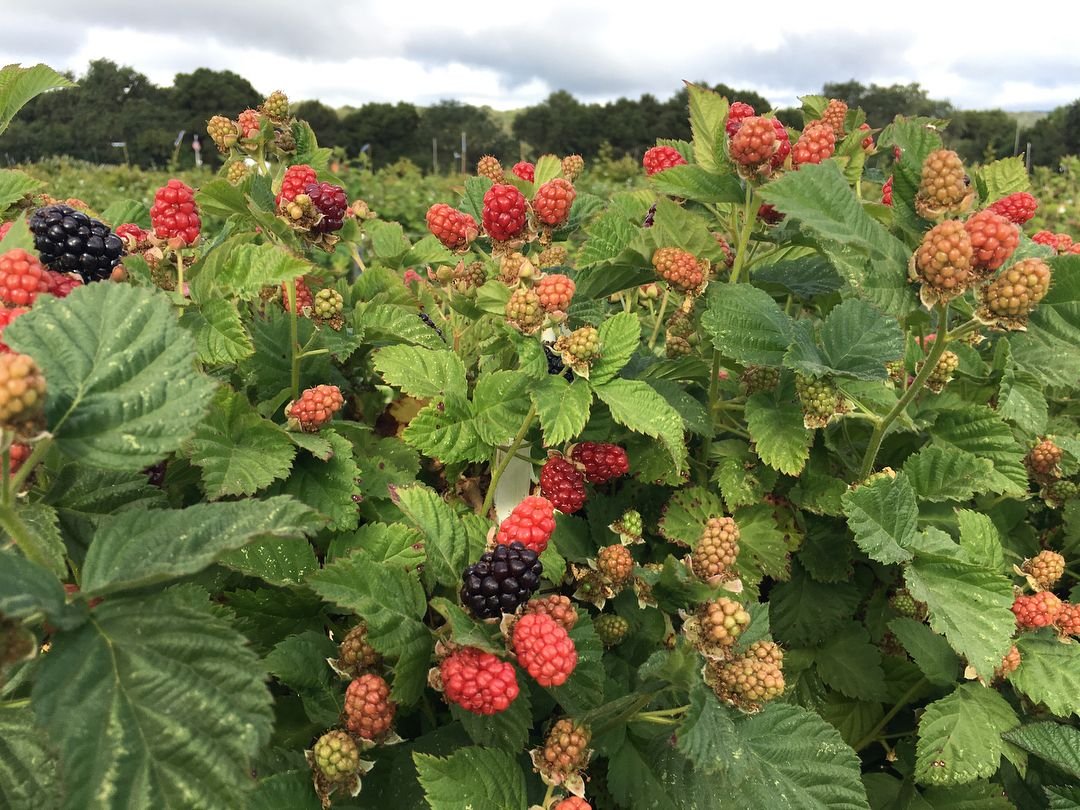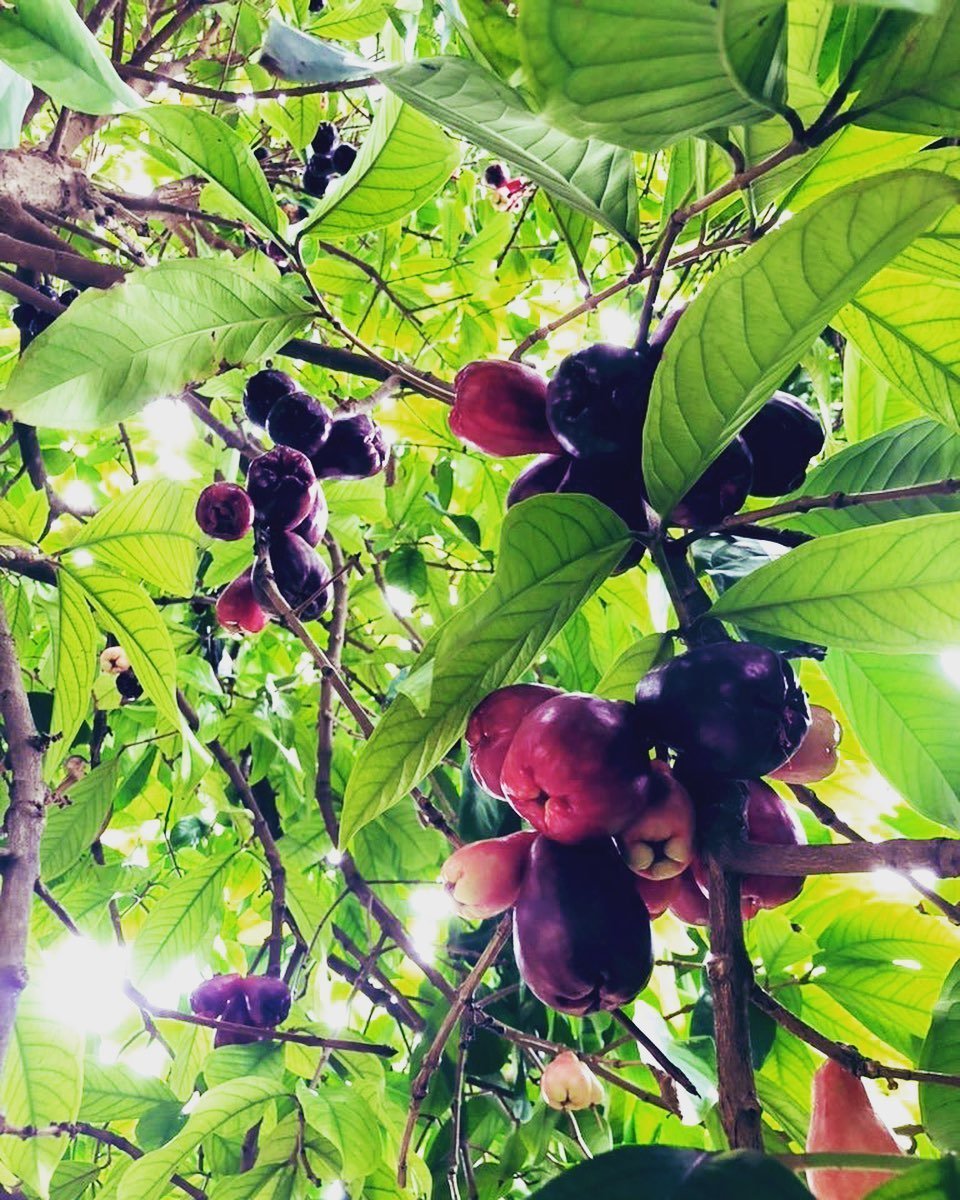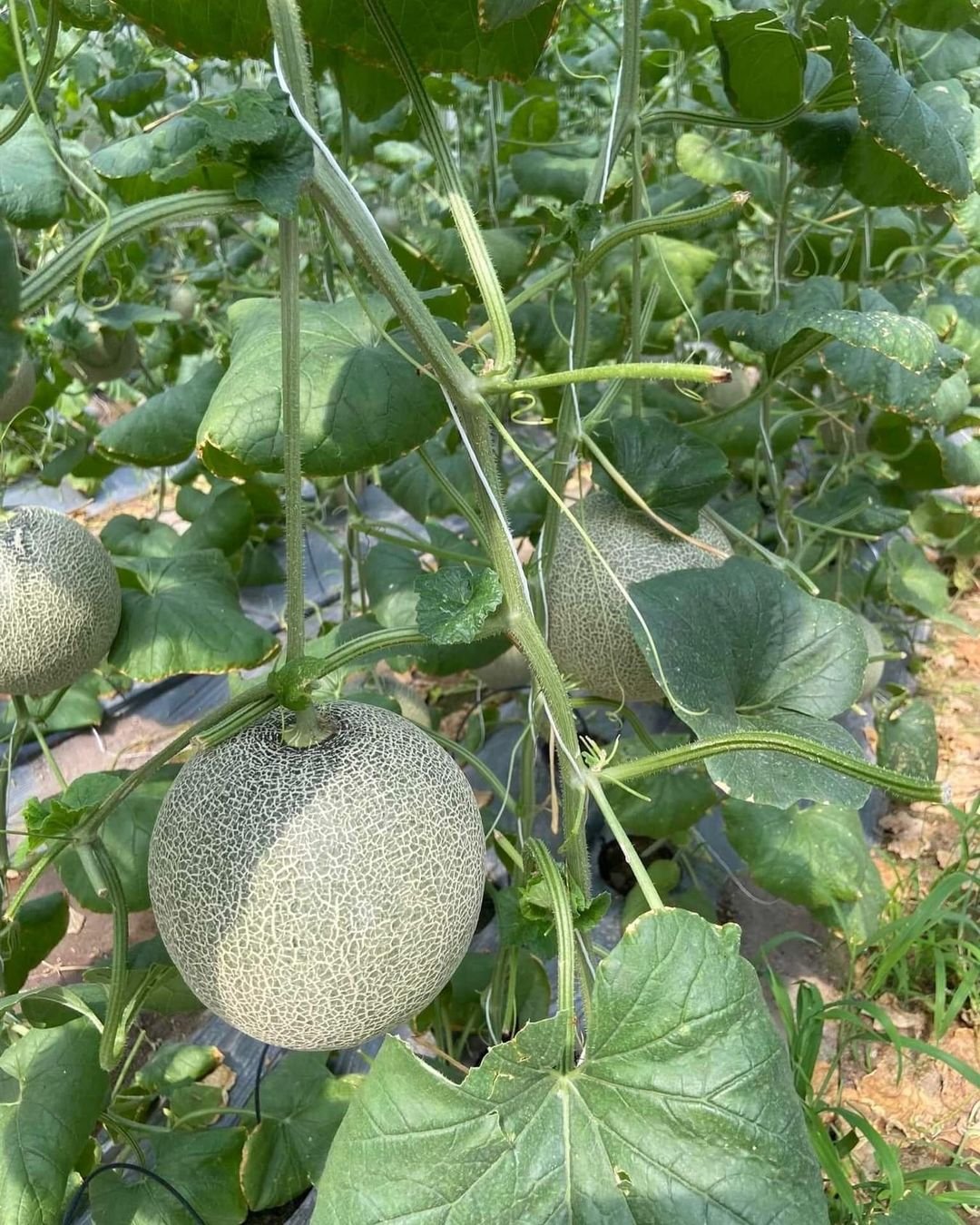Discover a comprehensive list of fruits that start with the letter “O,” including popular favorites like oranges and olives, as well as unique and lesser-known varieties like oguan fruit and ontari melon. Explore their origins, flavors and potential health benefits in this informative guide.
When it comes to fruits, there’s an incredible variety out there each with its unique flavor, texture, and nutritional benefits. From the common apples and oranges to the exotic durian and rambutan, the world of fruits is a delightful exploration for our taste buds. Today, we’ll focus on fruits that start with the letter “O,” taking a closer look at their characteristics, origins and potential health advantages.
1. Oranges

| Aspect | Details |
|---|---|
| Botanical Name | Citrus sinensis |
| Common Name | Orange |
| Plant Name | Orange Tree |
| Zone | 9-11 |
| Sun Exposure | Full sun |
| Soil Type | Well-drained, loamy soil |
| Watering | Regular watering, especially during dry spells |
| Growth Habit | Evergreen tree |
| Height/Spread | Height: 15-25 feet Spread: 15-20 feet |
| Special Features | Citrus fruit, sweet and tangy flavor, rich in vitamin C |
Let’s kick off our list with a classic – the orange. This vibrant, juicy fruit is a staple in many households worldwide. Oranges are rich in vitamin C, which plays a crucial role in boosting our immune system and promoting healthy skin. They come in various varieties, such as navel, Valencia and blood oranges, each with its distinct sweetness and tartness.
2. Olives

Here is a detailed information chart for olives (Olea europaea):
| Attribute | Description |
|---|---|
| Botanical Name | Olea europaea |
| Common Name | Olive |
| Plant Type | Evergreen tree |
| Zone | USDA Zones 8-11 |
| Sun Exposure | Full sun |
| Soil Type | Well-drained, sandy or loamy soil |
| Watering Needs | Moderate; drought-tolerant once established |
| Growth Habit | Upright, spreading |
| Height/Spread | Height: 20-30 feet (can vary by variety); Spread: 20-30 feet |
| Fruit | Small drupe (olive fruit) |
| Harvest Time | Fall to early winter |
| Special Features | – Fruits start green and turn black or purple when ripe. |
While not everyone’s cup of tea, olives hold a special place in Mediterranean cuisine and culture. These small, oval-shaped fruits are typically cured or brined before consumption. Olives are a great source of healthy monounsaturated fats, antioxidants, and vitamin E, which may help reduce inflammation and support cardiovascular health.
3. Olallieberries

Here is the detailed information chart for Olallieberries:
| Attribute | Description |
|---|---|
| Botanical Name | Rubus ursinus x Rubus idaeus |
| Common Name | Olallieberry |
| Plant Type | Perennial bramble |
| Zone | USDA Zones 7-9 |
| Sun Exposure | Full sun |
| Soil Type | Well-draining, loamy soil |
| Watering Needs | Regular watering, especially during fruiting |
| Growth Habit | Trailing or semi-erect canes |
| Height/Spread | Height: 6-8 feet, Spread: 6-8 feet |
| Fruit | Large, glossy, black berries |
| Harvest Time | Late spring to early summer |
| Special Features | – Hybrid berry with a flavor profile similar to blackberries and raspberries. |
Olallieberries are a unique hybrid berry, a cross between a blackberry and a youngberry (which itself is a hybrid of raspberries and blackberries). These dark, juicy berries have a tart yet sweet flavor and are rich in antioxidants, fiber and vitamin C. They’re often used in jams, pies and other desserts.
4. Otaheite Apples

Here is the detailed information chart for Otaheite Apples:
| Attribute | Description |
|---|---|
| Botanical Name | Syzygium malaccense |
| Common Name | Otaheite Apple, Malay Apple, Mountain Apple |
| Plant Type | Evergreen tree |
| Zone | USDA Zones 10-11 |
| Sun Exposure | Full sun |
| Soil Type | Well-draining, loamy soil |
| Watering Needs | Regular watering, moderate drought tolerance |
| Growth Habit | Upright, spreading |
| Height/Spread | Height: 20-60 feet, Spread: 20-30 feet |
| Fruit | Oblong or pear-shaped, red to purplish skin |
| Harvest Time | Late spring to summer |
| Special Features | – Crisp, juicy flesh with a slightly sweet flavor. |
Despite their name, Otaheite apples are not actually apples but a type of guava native to South America. These small round fruits have a yellowish-green skin and a sweet, slightly tart flesh. They’re packed with vitamin C, dietary fiber and various antioxidants, making them a nutritious addition to any diet.
5. Oval Kumquats

Here is the detailed information chart for Oval Kumquats:
| Attribute | Description |
|---|---|
| Botanical Name | Fortunella margarita |
| Common Name | Oval Kumquat, Nagami Kumquat |
| Plant Type | Evergreen shrub or small tree |
| Zone | USDA Zones 8-11 |
| Sun Exposure | Full sun |
| Soil Type | Well-draining soil, tolerates a range of soil types |
| Watering Needs | Regular watering; moderate drought tolerance |
| Growth Habit | Compact, bushy |
| Height/Spread | Height: 8-15 feet, Spread: 6-10 feet |
| Fruit | Small, oval, bright orange fruit |
| Harvest Time | Late fall to early spring |
| Special Features | – Edible skin and tart-sweet flesh, eaten whole. |
Oval kumquats are a unique variety of the kumquat fruit known for their oval shape and bright orange color. These tiny citrus fruits can be eaten whole, including the edible peel, which adds a delightful tartness to their sweet flesh. Oval kumquats are a good source of vitamin C, fiber and various plant compounds with potential health benefits.
6. Oblong Avocados

| Aspect | Details |
|---|---|
| Botanical Name | Persea americana |
| Common Name | Avocado |
| Plant Name | Avocado Tree |
| Zone | Varies depending on variety and region |
| Sun Exposure | Full sun |
| Soil Type | Well-drained soil |
| Watering | Regular watering, especially during dry spells |
| Growth Habit | Evergreen tree |
| Height/Spread | Height: Varies depending on variety Spread: Varies depending on variety |
| Special Features | Nutrient-rich fruit, high in healthy fats and vitamins, creamy texture |
While avocados come in various shapes and sizes, the oblong variety is particularly distinctive. These elongated avocados are rich in healthy monounsaturated fats, fiber, various vitamins and minerals, including potassium, vitamin E and vitamin B6. They’re a versatile ingredient in many dishes from guacamole to smoothies.
7. Oregon Grapes

Here is the detailed information chart for Oregon Grapes:
| Attribute | Description |
|---|---|
| Botanical Name | Mahonia aquifolium |
| Common Name | Oregon Grape, Oregon Grape Holly |
| Plant Type | Evergreen shrub |
| Zone | USDA Zones 5-9 |
| Sun Exposure | Full sun to partial shade |
| Soil Type | Well-draining, adaptable to various soil types |
| Watering Needs | Moderate; drought-tolerant once established |
| Growth Habit | Upright, bushy |
| Height/Spread | Height: 3-6 feet, Spread: 2-5 feet |
| Fruit | Small, blue-black berries |
| Harvest Time | Late summer to early fall |
| Special Features | – Holly-like, glossy green leaves that turn purplish-bronze in winter. |
Despite their name, Oregon grapes are not true grapes but rather a type of edible berry native to western North America. These small, blue-black berries have a tart flavor and are often used in jams, jellies and baked goods. Oregon grapes are a good source of antioxidants, vitamin C and dietary fiber.
8. Oguan Fruit

The oguan fruit, also known as the Buddha’s hand, is a unique citrus fruit with a distinctive, finger-like appearance. While the fruit itself is not typically eaten due to its minimal flesh, the zest is highly prized for its intense aroma and flavor, often used in various culinary applications and traditional Chinese medicine.
9. Ontari Melon

Here’s a concise and verified chart with information about the Ontari Melon:
| Category | Details |
|---|---|
| Botanical Name | Cucumis melo |
| Common Name | Ontari Melon |
| Plant Name | Melon |
| Zone | Typically zones 4-11 |
| Sun Exposure | Full sun |
| Soil Type | Well-draining, fertile soil |
| Watering | Regular; keep soil consistently moist, not waterlogged |
| Growth Habit | Vining |
| Height/Spread | Varies widely; can spread up to 10-15 feet |
| Special Features | Sweet, aromatic flavor; prized for its juicy flesh |
The ontari melon, also known as the Thai melon or sun melon, is a variety of cantaloupe popular in Southeast Asia. It has a sweet, aromatic flavor and a bright orange flesh. Ontari melons are a good source of vitamin C, vitamin A, and potassium, making them a refreshing and nutritious addition to any meal.
10. Oregon cherry

Here’s the information for “Oregon cherry”:
| Category | Details |
|---|---|
| Botanical Name | Prunus emarginata |
| Common Name | Oregon cherry |
| Plant Name | Cherry |
| Zone | Typically zones 5-9 |
| Sun Exposure | Full sun |
| Soil Type | Well-draining, fertile soil |
| Watering | Regular |
| Growth Habit | Small tree |
| Height/Spread | Up to 20-30 feet in height; spread varies |
| Special Features | Sweet, juicy fruits; used in fresh eating and cooking |
Oregon cherry or “Oregon” for short, are a variety of Japanese cherries known for their deep red color and intense sweetness. These cherries are often used in desserts, jams and preserves and are also enjoyed fresh during their short growing season.
11. Onidegari Plums

Here’s a generalized overview for a typical plum variety:
| Category | Details |
|---|---|
| Botanical Name | Prunus domestica |
| Common Name | Plum |
| Plant Name | Plum tree |
| Zone | Typically zones 4-9 |
| Sun Exposure | Full sun |
| Soil Type | Well-draining, fertile soil |
| Watering | Regular; keep soil consistently moist |
| Growth Habit | Small to medium-sized tree |
| Height/Spread | Varies by cultivar, typically 15-25 feet in height/spread |
| Special Features | Edible fruits with a range of flavors and colors |
Onidegari plums are a Japanese variety of plums known for their round shape, deep red color and sweet-tart flavor. These plums are often enjoyed fresh or used in various culinary applications, such as jams, sauces and baked goods.
12. Ogal Berries

here’s the information:
| Category | Details |
|---|---|
| Botanical Name | Lycium barbarum |
| Common Name | Goji Berries (Ogi Berries) |
| Plant Name | Goji Berry |
| Zone | Typically zones 5-9 |
| Sun Exposure | Full sun |
| Soil Type | Well-draining, fertile soil |
| Watering | Moderate |
| Growth Habit | Shrub |
| Height/Spread | 3-10 feet tall, spreading habit |
| Special Features | Nutrient-rich berries; used in culinary and health products |
Ogal berries, also known as wild olives or Indian olives, are small, olive-like fruits native to various parts of Asia. They have a slightly sour taste and are often used in pickles, chutneys and traditional medicines in regions like India and Nepal.
Remember, while these fruits offer a variety of potential health benefits, it’s essential to consult with a healthcare professional or a registered dietitian before making significant changes to your diet, especially if you have any underlying health conditions or specific dietary requirements.